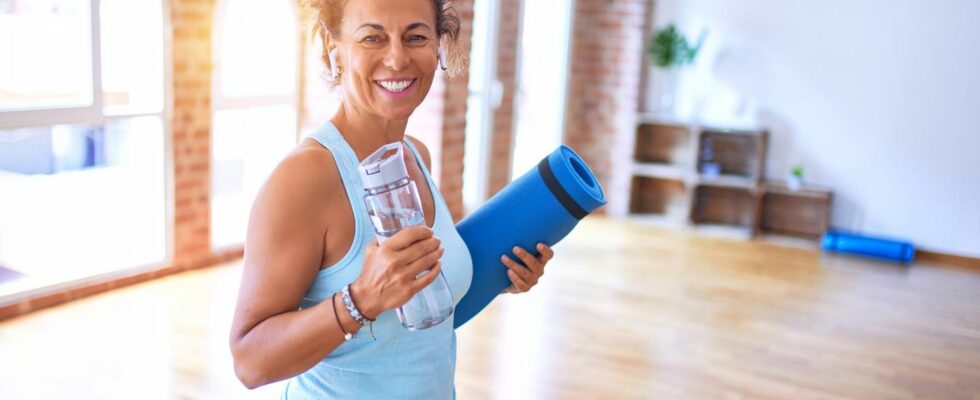Sports hacks
These fitness tricks are like anti-aging for your muscles
© Krakenimages.com / Adobe Stock
Unfortunately, as you get older, it doesn’t necessarily get easier to build or maintain muscle. But luckily we can counteract this: These fitness hacks make our muscles age more slowly.
Muscle mass, endurance, metabolism – it doesn’t get easier to maintain all of these at the same fitness level as we get older. But we don’t just have to accept it because there are ways and means by which we can stay fit even as we get older. By adjusting our sports program a little, we above all keep ours Muscles young and fit.
These workout tricks make our muscles age more slowly
1. Strength exercises with weights
The older we get, the more important strength training becomes. Since we automatically lose muscle mass as we get older, we should actively work on rebuilding or maintaining these muscles. Strong muscles are important, especially in old age, so that we remain mobile and fit. With light weights we can train our legs, core and arms wonderfully.
2. Focus on HIIT workouts
Another form of training that we should not neglect as we get older is high-intensity interval training, or HIIT for short. It challenges our endurance as well as our speed, and we also actively strengthen our muscles. During a HIIT workout, we alternate high-intensity active phases with slower phases or active breaks. An example: After 40 seconds of sprinting or jumping jacks, we use 20 seconds of walking as a regeneration phase. The mix of the active power phases and the slower phases combines the effect of burning fat with an increase in endurance and the building of muscles – as long as we incorporate strength exercises into our training. Compound exercises such as squats or lunges that train several parts of the body at the same time are ideal.
3. Variance in repetitions
Completing different numbers of repetitions of a single exercise can be good for us at any age, but especially in the later stages of life. Depending on how often we do an exercise, it affects the muscles differently. For example, when we train with dumbbells, just a few repetitions have an intensive effect on the triceps, but the large pectoral muscle needs more repetitions to be optimally activated. The situation is similar with our leg muscles: the hamstrings, the muscles on the back of the thigh, need fewer repetitions, while the quadriceps on the front of the thigh need more. By varying the number of repetitions of individual exercises, we optimally strain all muscles.
Sources used: eatthis.com, fitforfun.de
